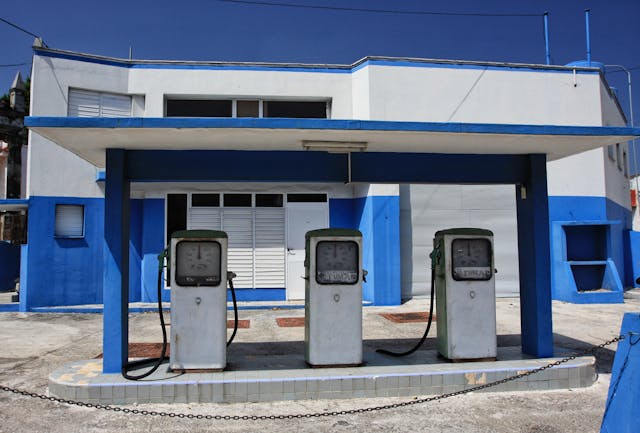Table of Contents
Ethereum gas fees are a critical aspect of the Ethereum network, representing the cost of computational resources required to execute transactions and smart contracts. In the context of yield farming, gas fees play a crucial role in determining the profitability of farming activities.
Visit https://ethereumcode.app/, an online trading service that offers users a unique opportunity to navigate the complexities of gas fees and optimize their yield farming strategies.
Understanding Ethereum gas fees is essential for yield farmers, as high fees can significantly impact profits. Gas fees are influenced by network congestion, which can fluctuate based on various factors such as the popularity of certain DeFi protocols and the overall demand for Ethereum transactions.
The Impact of Gas Fees on Yield Farming

Gas fees directly impact the profitability of yield farming by reducing the net returns earned from farming activities. For example, high gas fees can make it cost-prohibitive to perform certain transactions, such as depositing or withdrawing funds from a liquidity pool. This can result in lower overall yields for yield farmers.
Additionally, gas fees can vary widely depending on the time of day and network conditions. Farmers may need to carefully time their transactions to minimize gas fees and maximize profits. Strategies such as batch-processing transactions or using layer 2 scaling solutions can help mitigate the impact of high gas fees.
Optimizing Gas Fees for Yield Farming
To optimize gas fees for yield farming, farmers can employ several strategies:
1. Gas Fee Estimation: Use tools and services that provide real-time gas fee estimates to determine the optimal gas price for transactions.
2. Transaction Batching: Combine multiple transactions into a single batch to reduce overall gas costs.
3. Gas Token Usage: Utilize gas tokens, such as CHI or GST2, to pre-purchase gas at lower prices and use them during times of high gas fees.
4. Gas Fee Tracking: Monitor gas fees over time to identify trends and adjust farming strategies accordingly.
5. Layer 2 Solutions: Explore layer 2 scaling solutions, such as Optimism or Arbitrum, to reduce gas fees and increase transaction throughput.
Calculating Gas Fees in Yield Farming

Gas fees in Ethereum are calculated based on the complexity of the transaction and the current gas price. The formula for calculating gas fees is:
Gas Fees = Gas Price × Gas Limit
Gas Fees=Gas Price×Gas Limit
Where:
Gas Price is the price in Gwei (1 Gwei = 0.000000001 ETH) paid per unit of gas.
Gas Limit is the maximum amount of gas that can be consumed by a transaction.
For example, if the gas price is 100 Gwei and the gas limit is 50,000, the total gas fees would be 100 * 50,000 = 5,000,000 Gwei (0.005 ETH).
Gas Fee Trends in Yield Farming
Gas fees in Ethereum have been historically volatile, with periods of high fees during times of network congestion. Factors such as the popularity of DeFi protocols, the release of new tokens, and overall network usage can all contribute to fluctuations in gas fees.
Predicting gas fee trends in yield farming can be challenging due to the complex nature of the Ethereum network. However, monitoring network activity and gas price trends can help farmers anticipate potential fee increases and adjust their strategies accordingly.
Maximizing Returns in Yield Farming
To maximize returns in yield farming, farmers should consider the following strategies:
1. Diversification: Spread liquidity across multiple pools to reduce risk and increase overall yield potential.
2. Risk Management: Use strategies such as impermanent loss protection or hedging to mitigate potential losses.
3. Monitoring Rewards: Regularly check and claim rewards to ensure they are not being negatively impacted by high gas fees.
4. Staying Informed: Stay up-to-date with the latest developments in the DeFi space to identify new opportunities for yield farming.
Case Studies and Real-World Examples
Several case studies highlight the importance of gas fee optimization in yield farming. For example, a yield farmer who carefully times their transactions during periods of low network congestion can significantly reduce gas fees and increase overall profitability.
Additionally, farmers who utilize gas tokens or layer 2 solutions can further enhance their returns by reducing the cost of transactions.
Conclusion
In conclusion, Ethereum gas fees play a critical role in determining the profitability of yield farming activities. By understanding how gas fees are calculated, monitoring fee trends, and employing optimization strategies, farmers can maximize their returns and navigate the challenges of a dynamic DeFi ecosystem.
Author Profile
- Blogger and Educator by Passion | Senior Online Media & PR Strategist at ClickDo Ltd. | Contributor to many Education, Business & Lifestyle Blogs in the United Kingdom & Germany | Summer Course Student at the London School of Journalism and Course Instructor at the SeekaHost University.
Latest entries
 FinanceMay 28, 2025Government Unveils Major Crackdown on Tax Avoidance – Up to £6.5 Billion Could Be Reclaimed by 2029
FinanceMay 28, 2025Government Unveils Major Crackdown on Tax Avoidance – Up to £6.5 Billion Could Be Reclaimed by 2029 FinanceApril 28, 2025Rising Tax Pressures Push Directors to Rethink Income Strategies for the New Tax Year
FinanceApril 28, 2025Rising Tax Pressures Push Directors to Rethink Income Strategies for the New Tax Year BusinessApril 7, 2025The Future of Leadership Development in the Remote Work Era
BusinessApril 7, 2025The Future of Leadership Development in the Remote Work Era Business StrategiesFebruary 13, 20254 Ways to Improve Your Brand’s Online Reputation
Business StrategiesFebruary 13, 20254 Ways to Improve Your Brand’s Online Reputation





